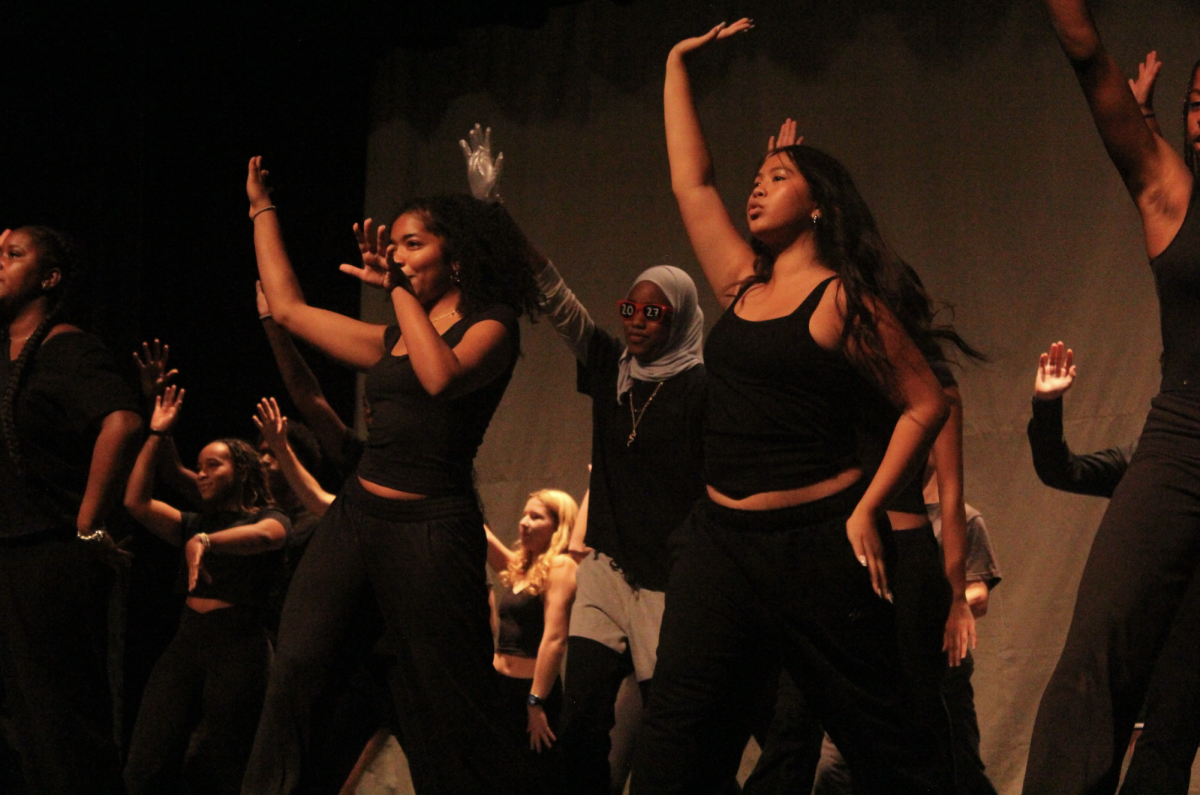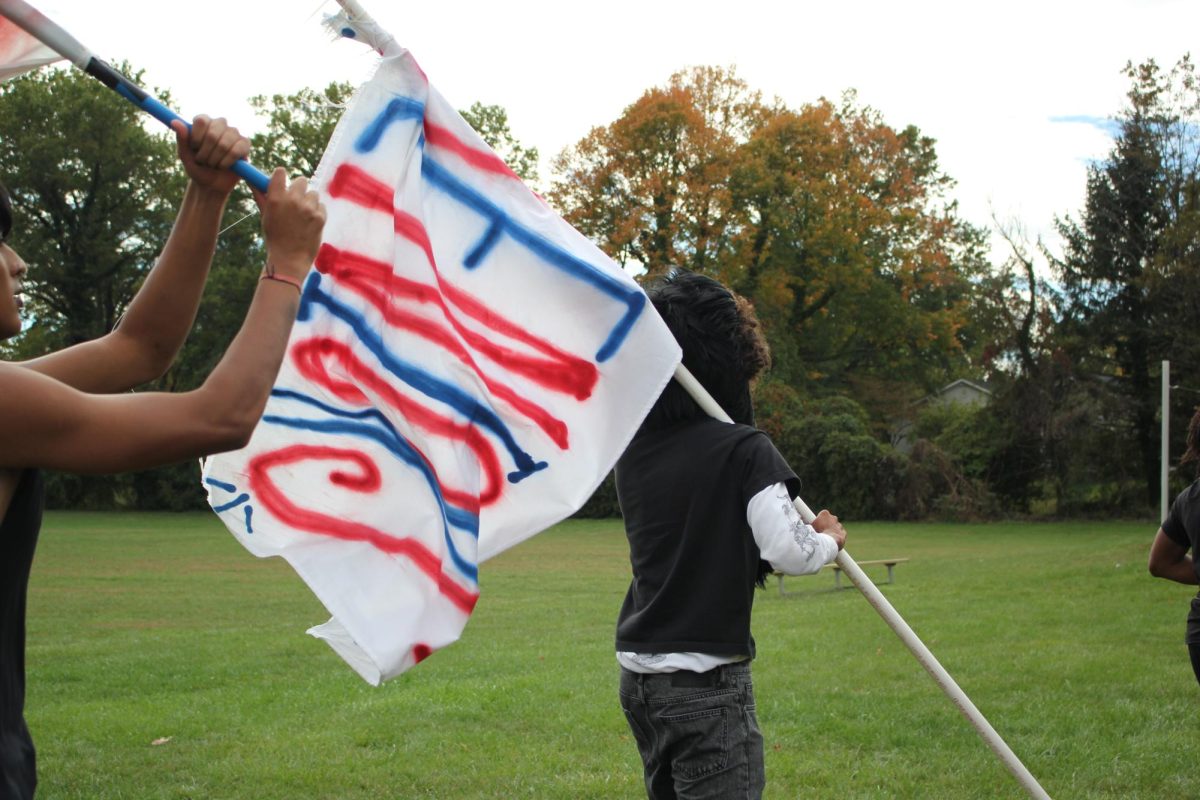SPOILER ALERT through season six of the show.
Holy. Smokes. If you had told me that the happy-go-lucky show about a powerless boy who wanted to be a superhero would eventually turn into an all out war between heroes and villains with society crumbling, I wouldn’t have believed you. Yet, this is exactly what has happened. In a snap of a finger, the world from My Hero Academia has turned into a chaotic, yet well-written, mess. While the animation at the beginning of the season was lackluster, as the season progressed, it perfectly supported the mood during tension-filled moments.

Recapping what happened in the season prior, our protagonist, a formerly powerless (quirkless) boy named Deku, awakened a second quirk: Black Whip. To our, and his, shock, he was told that he would receive six more quirks, all that were possessed by the previous holders of his power. While the heroes kept evolving, the villains were doing the same as well. Tomura Shigaraki, leader of the villains, evolved his powers by avoiding and demolishing, quite literally, a city and a titan (Gigantomachia). He would also go from leading a mere troop of villains to becoming the leader of an organization of thousands of supporters: The Paranormal Liberation Front (PLF), granting him clearance from his mentor’s doctor to undergo modifications to awaken his true devastating abilities. Finally, to lead into season six, infiltrating the PLF, Japan’s number two hero, Hawks, makes it clear to Endeavor that the PLF plans to attack and demolish society in the Spring, and that the heroes must prepare for war.
The show was directed again by Studio Bones and was highly acclaimed by Rotten Tomatoes with an 84% audience score.
Unlike other seasons, which started off with fun, non-canonical side stories, this season went straight to the action, starting off immediately with the war as the heroes prepared to storm the Liberation Front’s base. This decision was beneficial, as it allowed the pacing of the story to flow well and utilize cliffhangers at just the right moments.
One aspect that I appreciated this season was the focus on certain characters, and particularly those who aren’t typically in the limelight. For example, the episode that featured Japan’s number five hero, Mirko, was spectacular. I really enjoyed watching her take on four High End Nomu, genetically engineered corpses that even Endeavor and Hawks just barely managed to take on, with such determination. The music perfectly complimented her struggling moments, and the animation of her fight scene was fluid. Although we had just formally met her character, it felt as though we had known her for years through her flashy personality and her repeated thoughts on the central themes of heroism. Short but sweet, it gave us a perfect glimpse into a character that piqued the interest of many viewers; however, it left me wanting to see more of her in action, along with Lady Nagant during the vigilante arc.
This season’s use of music and color play was phenomenal. Spine-chilling moments, like the awakening of Shigaraki, were perfectly supported by the increasingly sinister music and quite literal darkening of the atmosphere, as colors became more muted.
The plot quickly descended into chaos as battle after battle occurred, with the author pulling some insanely unexpected plot twists. By the end of each episode, my dad and I found ourselves completely dumbfounded as to how the story was going to resolve. Going even further, besides the death of Nighteye in season four, the story had never witnessed the deaths of characters that the audience had grown attached to. Emotions were intense, as the audience observed intently as our main characters heart-wrenchingly cried over the loss of their comrades, with ourselves often crying along.
On that note, the questioning of the true justice of hero society was emphasized in this season, leaving its viewers sympathizing with the villains. As of season four, this theme has been constantly brought up, but it was truly in the spotlight throughout this season, especially with the betrayal of Twice. Often, audiences root for the heroes, but one of the most profound aspects of My Hero Academia lies in the way it can make you sympathize with its villains. Outcasted by society, Twice’s backstory left its audience wishing for him to have a happy ending. Tragically, this was anything but, as he was betrayed over and over again, with his biggest slip-up being trusting Hawks. It’s no secret that the number two pro-hero is loved by his fans in the universe and by viewers alike. Yet, the decision to force him to backstab (figuratively and literally) someone who had a good heart, but was affiliated with those who hurt others, was such a conflicting moment for the audience. Twice’s final words were chilling, and left me truly questioning my sense of justice in the world: “Who are you to decide that my life wasn’t good? I was perfectly fine without [you heroes] trying to save me.”
However, it wasn’t just the deaths that left a profound impact on its viewers; the reveal of several hidden relationships and the evolution of characters did as well. Although long-speculated by fans, the theory of Dabi being the eldest brother of the Todoroki family was finally confirmed in a spectacular show of pure, unhinged spite. I was left with my jaw hanging when Dabi revealed himself to his father and further shocked when his fury extended to his younger brother Shoto, who had nothing to do with his father’s abuse. A strong aspect of My Hero Academia is its ability to build up its plot and let viewers observe how characters grow from their experiences. The sharp contrast from Dabi’s previously calm demeanor and his current unhinged, childlike vengeful personality hell-bent on getting revenge against his father threw its viewers into left field; however, it was in line with the chaotic nature of this season and was spectacularly done.
The War Arc was My Hero Academia’s best yet, with its fantastic soundtrack, shocking storytelling, and heartbreaking moments. It left hero society in shambles, decimated the hero population, and broke our protagonist. It came silently and left like a devastating storm. Yet, there is more to come. If this article interested you, look out for an article reviewing the Vigilante Arc in the near future. My Hero Academia is available to watch on the streaming service Crunchyroll.





